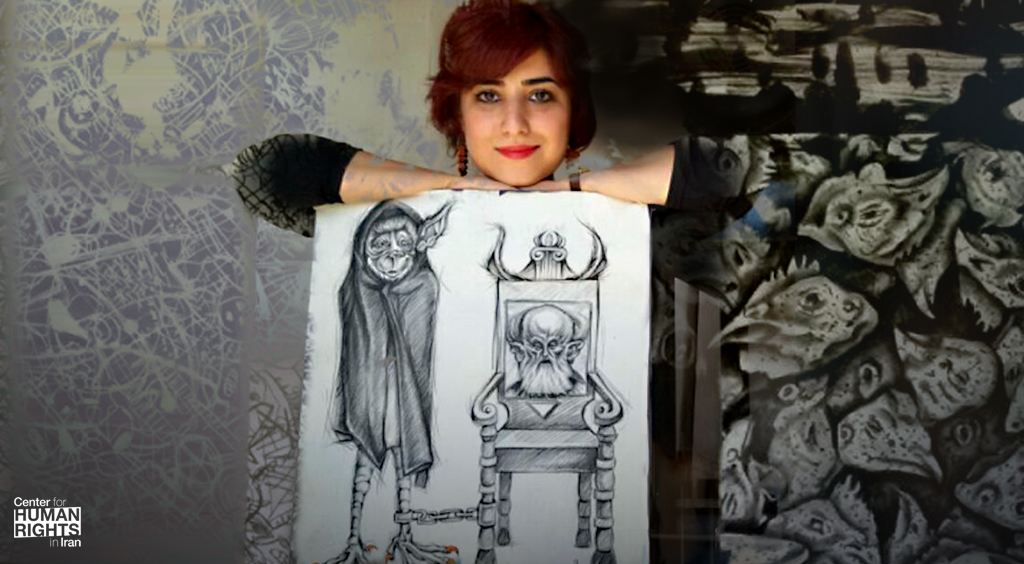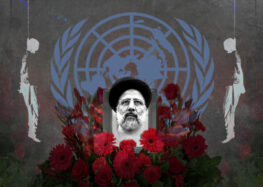Target on Her Back: Tortured Woman Cartoonist in Iran Must Be Released from Prison
 Atena Farghadani Beaten to the Point of Losing Consciousness
Atena Farghadani Beaten to the Point of Losing Consciousness
International Community Must Demand Her Freedom
April 30, 2024 – Atena Farghadani, a 37-year-old cartoonist and civil rights activist, should be immediately released from Tehran’s Evin Prison, where she was taken after being arrested outside Supreme Leader Ali Khamenei’s compound and tortured in the custody of the Islamic Revolutionary Guard Corps, said the Center for Human Rights in Iran (CHRI).
“Farghadani is an artist, an activist, and a woman, all of which make Islamic Republic officials tremble,” said CHRI Executive Director Hadi Ghaemi.
“She had a target on her back for resolutely standing up to the Islamic Republic’s repression,” he said. “The international community should demand her immediate release.”
“Her commitment to freedom and justice is unwavering and calls for her freedom by fellow cartoonists and artists should be amplified by all defenders of human rights,” Ghaemi added.
Farghadani was detained on April 13, 2024, by intelligence agents of the Islamic Revolutionary Guard Corps (IRGC) amidst an escalated crackdown by the Islamic Republic on women’s rights and political dissent, which has been marked by the intensified deployment of state security forces tasked with enforcing the compulsory hijab policy for women and girls.
Farghadani was apprehended while attempting to display one of her cartoons outside Supreme Leader Ali Khamenei’s compound, said Mohammad Moghimi, an Iranian human rights lawyer familiar with her case, during an interview with CHRI.
Tortured in IRGC Custody
Moghimi further revealed that Farghadani was taken into custody by IRGC intelligence agents and subjected to torture at a secret location.
“After being transported to a safe house, she endured brutal torture, resulting in loss of consciousness from heavy bleeding and head injuries,” he elaborated.
“Several hours later, she regained consciousness in the prayer room of the security police, known as the Fateb 8th Base,” Moghimi added.
![]() He also noted that some of Farghadani’s clothing were removed during her arrest, and upon them being returned to her, she noticed traces of blood stains that had been washed off.
He also noted that some of Farghadani’s clothing were removed during her arrest, and upon them being returned to her, she noticed traces of blood stains that had been washed off.
According to the human rights lawyer, “Farghadani was first transferred to Gharchak Prison, south of Tehran, but officials there refused to accept her due to signs of torture on her face and body.”
Farghadani, who was then taken to Tehran’s Evin Prison where she has been held ever since, is facing charges of “insulting the sacred,” “propaganda against the state” and “disrupting public order,” which would carry a minimum of seven years’ imprisonment. Moghimi added that Farghadani was simply trying to “peacefully protest harassment by the security agencies and their attempts to prevent her from carrying out artistic activities and exhibitions.”
The IRGC has a documented history of subjecting political detainees to torture, as well as sexual assault, forced disappearances, and killings with impunity, as revealed by the UN’s independent Fact-Finding Mission on Iran. Human rights organizations, as well as investigate media reports, have also documented the systematic use of torture in Iran’s detention houses and prisons.
Most recently, an investigative BBC report examined a leaked report about 16-year-old street protester Nika Shakarami, who was sexually assaulted before being beaten by the arresting agents, according to the BBC’s findings. IRGC commanders tried to hide the evidence and state officials claimed the teenager had committed suicide.
Decade of Peaceful Dissent Punished with Prison and Torture
In 2014, Farghadani, an honor student in fine arts at Al-Zahra University in Tehran, was prevented from completing her masters’ degree after depicting members of Iran’s parliament looking like animals and posting them on Facebook.
Farghadani was arrested in August 2014, not only for her political drawings, but also for meeting with families of political prisoners and victims of the 2009 Green Movement protests.
She was detained and interrogated in the IRGC’s Ward 2-A in Evin Prison for two months, during which she was subjected to intense psychological pressure and prevented from having family visits, prompting her to go on a hunger strike in October 2014.
In June 2015, Branch 15 of the Islamic Revolutionary Court in Tehran sentenced the artist to a total of 12.5 years in prison on charges of “assembly and collusion against national security,” “propaganda against the state,” and “insulting the Supreme Leader, the President, Members of the Parliament, and the IRGC.”
Nearly two years later she was released on bail May 3, 2016.
Following a wave of arrests in connection with the “Woman, Life, Freedom” uprising, Farghadani was rearrested on June 7, 2023, after responding to a summons issued by the Evin security court and transferred to Gharchak Prison. On June 21, 2023, the artist was rushed to a hospital suffering from the effects of a hunger strike she had undertaken to protest prison conditions. She was released on bail a few days later.
On July 9, 2023, she gave an interview to the London-based Iran International television network saying she was convinced Gharchak Prison officials poisoned her food, which caused “imbalance, aching bones, dizziness and blurred vision.”
The Islamic Republic of Iran has a documented history of subjecting artists to severe persecution for criticizing state policies, including by sentencing them to death, as seen in the recent case of the dissident rapper Toomaj Salehi.
“It is glaringly evident that Atena Farghadani is perilously endangered in state custody in Iran,” said Ghaemi.
“It is imperative that UN and government leaders worldwide, as well as artists and advocates of freedom of speech and expression around the globe unite in her defense, loudly proclaim her name, and vehemently demand her release, alongside the liberation of all individuals unjustly imprisoned in Iran for the exercise of their fundamental rights,” he added.
This report was made possible from donations by readers like you. Help us continue our mission by making a tax-deductible donation.






